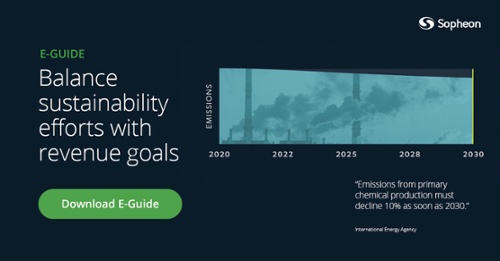Where should sustainability fit within the realm of innovation and new product development priorities? Truthfully, it should be near the top. But sustainability encompasses so many facets, and knowing where to start can be quite confusing.
In a recent episode of the Innovation+Talks podcast, Jeffrey Whitford, Head of Sustainability, Social Business Innovation, and Life Science Branding at MilliporeSigma, crystalized the quandary perfectly, “If you wait to have all of the things correct, good luck getting there. But if you can start just taking steps, it's amazing the progress you can make and what you can accomplish.”
Listen to the full 'Realm of Sustainability' podcast episode now
Let’s take a closer look at why making sustainability should be a top innovation consideration.
Sustainability has many motivators
Corporate sustainability efforts are nothing new. However, the depth and breadth at which companies incorporate green practices continue to expand. The hope is that environmentally-friendly efforts are altruistic. In practice, however, corporate change is more often than not focused on fiscal pressures or the potential for financial gain.
A 2021 McKinsey Global Survey found that 22% of respondents indicated that their companies “realized modest or significant value from sustainability in the past five years.” The report also found that 40% expect the same levels of value in the next five years.
There are four different perspectives organizations have when considering how, when and where to incorporate sustainability:
● Waves of change —These cause inflection points in business models that make us rethink how we do things. This could include consumer demand, governmental requirements or simply aligning practices to create a culture that attracts talent.
● Cause — Many organizations have built sustainable practices into their DNA from the start and coexist with the environment, using alternative energy sources and finding new ways of working that spur unique economic activity. Going back to the McKinsey report, more than half of respondents with companies that gain value from sustainability indicated that their CEO makes sustainability a priority on the strategic agenda.
● Process —A company measures the impact of products and services on the environment while improving processes or finding alternative materials or material sources.
● Business model —Although the first three perspectives are viable, the fourth is the key. Sustainability is a whole new way of doing business that incorporates the previous three perspectives.
For many businesses, sustainability efforts result from a combination of the perspectives above. Environmentally-conscious business practices are no longer viewed as a benefit; instead, they’re an expected part of doing business — while at the same time being profitable. As it relates to new product development (NPD), organizations of all sizes continue to scrutinize sustainability practices within the product development process and innovate products that solve problems that make it easier for their customers to be more sustainable.
The role of sustainability in new product development
Sustainability needs to be an integral part of the innovation and new product development lifecycle instead of being a bolt-on activity. Incorporating environmentally-friendly ideas from the ground floor will ensure sustainability is part of a product’s DNA during every phase.
- Innovation planning. Firstly, take a holistic look at how your organization approaches innovation and identify strategic areas to implement sustainable practices across every department. Team leaders should look at activities that may have otherwise not garnered a second thought. This could be as simple as reducing the number of printed materials to something as advanced as investing in energy-efficient production equipment.
- Ideation. Consider sustainability factors when developing ideas. You could explore whether or not a product’s carbon footprint will be at an acceptable level or what features will help customers promote sustainability themselves.
- Concept development. Identify areas where material, production, usage and disposal considerations can be more sustainable and make the appropriate changes.
- Product development. Lastly, scrutinize resource utilization, materials selection and sourcing, production processes and what happens after consumption or retirement of the product.
Keeping track of sustainable product development progress
Once you’ve incorporated sustainability efforts, it’s essential to determine how well (or not well) you’re doing and make the appropriate corrections. Ask these specific questions to help identify areas of success and areas for improvement:
- Is there some reduction of waste or energy usage and, if so, how much?
- To what extent are our materials be recycled or made of green or natural raw materials?
- Is the company ahead of legislation or lagging in comparison with the competition?
- Can we minimize environmental damage or prolong the life of existing products?
- Are new products with sustainability features solving customer problems?
- Can the product be easily disassembled or recycled?
When I think of sustainable innovation, I’m reminded of a quote a customer posted on their wall, "Progressive improvement is better than delayed perfection." For many companies, the intersection of exciting new product development and a zero-carbon footprint may be far down the road—or even unachievable in some cases. But when every company prioritizes sustainability in their culture, processes and the kinds of products they bring forth to the market, we can significantly address long-term environmental concerns more easily.
Our new E-Guide, "How chemical companies achieve their sustainability and circular economy goals while also optimizing profitability," offers ideas on how you might turn a monumental challenge into a significant opportunity. Download it now








